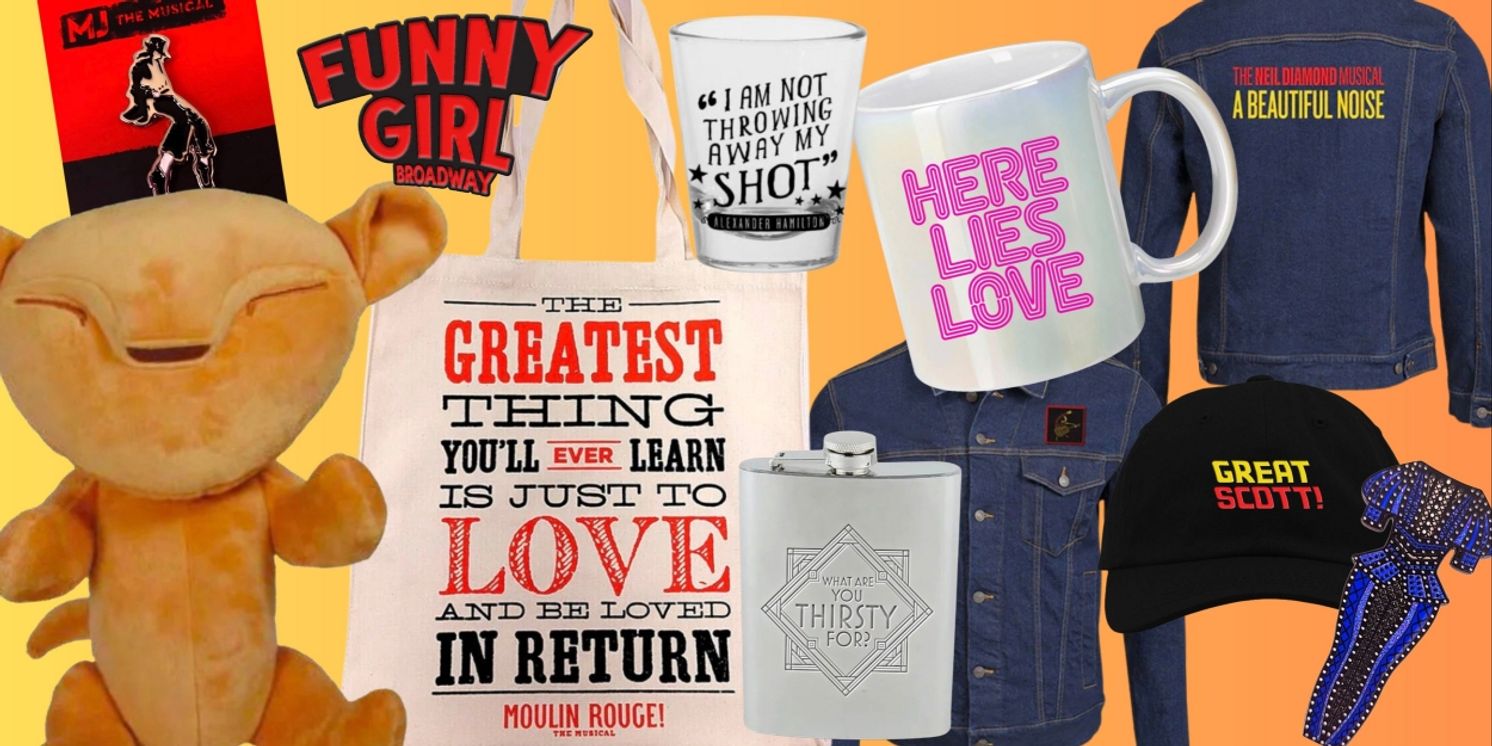What's the History of Broadway Show Merchandise?
Jennifer Ashley Tepper Is answering your questions with Broadway Deep Dive!

Do you have a burning Broadway question? Dying to know more about an obscure Broadway fact? Broadway historian and self-proclaimed theatre nerd Jennifer Ashley Tepper is here to help with her new series, Broadway Deep Dive. Every month, BroadwayWorld will be accepting questions from theatre fans like you. If you're lucky, your question might be selected as the topic of her next column!
Submit your Broadway question in the comments here!
This time, the reader question was: What's the history of Broadway show merchandise?
Today on Broadway, you can buy a Hamilton shot glass, a Lion King stuffed animal, a Shucked tote bag, or a Back to the Future key chain. Stores like Theatre Circle on 44th Street, One Shubert Alley, the Broadway Museum’s store, and the Drama Book Shop all sell merchandise that can also be found in individual Broadway theaters.
But when did Broadway merchandise start? And when did it become popular?
At the turn of the 20th century, prominent and major hit Broadway shows sometimes sold merchandise—or gave it away for promotional reasons. From Florodora to The Wizard of Oz, programs and sheet music were most commonly sold. Sometimes heralds, creatively printed artwork advertising the show, were given away. The Ziegfeld Follies had fans, excellent for audience members enjoying viewings on hot nights without air conditioning.
The Merry Widow, a mega-hit operetta on Broadway in 1907 which was revived six separate times in the following four decades, boasted more merchandise than anyone had seen previously. One could purchase a Merry Widow cigar or a Merry Widow gown! Often these items had to be ordered by mail.
This brings us to an important fact about Broadway merchandise: the fact that it didn’t exist as we know it today back when the significant majority of our Broadway theaters were built means that no space was allotted for merchandise stands, sellers, or storage! Any space utilized by Broadway merchandise in a theater today was likely once somebody’s office, a dressing room, or audience space.
During a time when clothing was constructed to last, and not as frequently mass produced, and Broadway shows could recoup in a matter of a few months and never be seen again, it seemingly did not make sense to create merchandise in clothing form for Broadway shows. No one wore outfits displaying logos for pieces of art when Oklahoma! opened, or else you can bet there would have been cowboy hats themed for the show on sale at the St. James.
In the mid-20th century, the rare hit show did sell specialty souvenirs. South Pacific, the 1949 Pulitzer Prize winner from Richard Rodgers and Oscar Hammerstein II, partnered with a fabric company to sell silk squares inspired by different songs from the musical. There were no Broadway merchandise companies as we know them today, back in the 1940s. Back then, any specialty souvenir would likely be made in partnership with a separate business.
It wasn’t until the 1970s that the onset of Broadway merchandise as we know it began to happen. Shows like Pippin, A Chorus Line, and Annie boasted souvenirs like key chains, buttons, and t-shirts, which were sold in semi-permanent booths at their respective theaters. With more young people attending Broadway shows, more average folks wearing t-shirts on a regular basis, and an increased ability to mass produce clothing and plastic items, the presence of merchandise on Broadway began to expand.
Merchandise became such a popular part of Broadway that the star dressing room at the Booth Theatre was permanently converted into One Shubert Alley, a store to sell souvenirs to the public!
In the 1980s, with Cameron Mackintosh’s Cats, Les Misérables, and The Phantom of the Opera on the scene, the global nature of these phenomenons and their universal logos helped Mackintosh’s mass merchandising take off. If you saw Cats anywhere in the world, you could buy the same t-shirt with the same cat eyes, and wearing it would tell everyone, no matter what language they spoke, that you’d experienced the popular hit.
In the past few decades, Broadway merchandising has become more common, at the same time as it has become more creative and individual. Almost every show has at least a few merchandise items from the time of its first preview. Most frequently, merchandise booths display posters, t-shirts, magnets, and cast recordings. Of course long-running hit shows often sell more items than shows that are at the beginning of their runs, unsure about the future. And musicals often sell more items than plays. At a play’s merchandise booth, options to purchase may be limited to a poster, magnet, and published copy of the script. But it is rare to find any Broadway show without a merchandise booth in their lobby or back of their orchestra section these days.
Shows, particularly musical comedies, have gained positive word of mouth and delighted fans when they’ve sold specific merchandise in the past few decades. If you visited the merchandise booth at Urinetown in the early 2000s, you might have left Henry Miller’s Theatre with show-themed toilet paper. School of Rock sold a themed set of drum sticks, and All Shook Up had a martini shaker! From Christmas ornaments to stress balls, from unexpected plush figures to cell phone cases, Broadway shows are now luckily serviced by merchandise companies who make the souvenirs for each production unique. Broadway merchandise has made the act of seeing a Broadway show even more special, since theatergoers now have the opportunity to go home with a permanent memento from the show.
You can shop Broadway merch today from BroadwayWorld's Theatre Shop!
Comments
Videos

